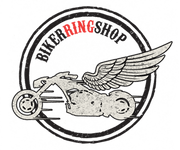Biker Keychains
Sapphire Skull Sterling Silver Biker Keychain
$154.00
Sold out
Tribal Sterling Silver Key Chain
$210.00
Skeleton Hand Skull Sterling Silver Men's Key Chain
$289.00
Sold out
Heavy Skull Head 925 Sterling Silver Biker Key Chain
$293.00
Sold out
Sterling Silver Diamond Eyes Skull Key Chain
$144.00
Sold out
Ruby Eye Dragon Silver Leather Keychain
$320.00
Sold out
Sterling Silver Tattoo Keychain
$146.00
Sold out
Silver Skull Skeleton Bone Keychain
$154.00
Sold out
Sterling Silver Skull Gothic Key Chain
$153.00
Sold out
Silver Skull Flash Drive Pendant Keychain
$89.00
Sold out
Sterling Silver & Genuine Leather Dragon Keychain
$255.00
Sold out













![Mad Red Eye Sterling Silver Skull Keychain [4]](http://www.bikerringshop.com/cdn/shop/files/Mad-Red-Eye-Sterling-Silver-Skull-Keychain-4_{width}x.jpg?v=1722828047)








